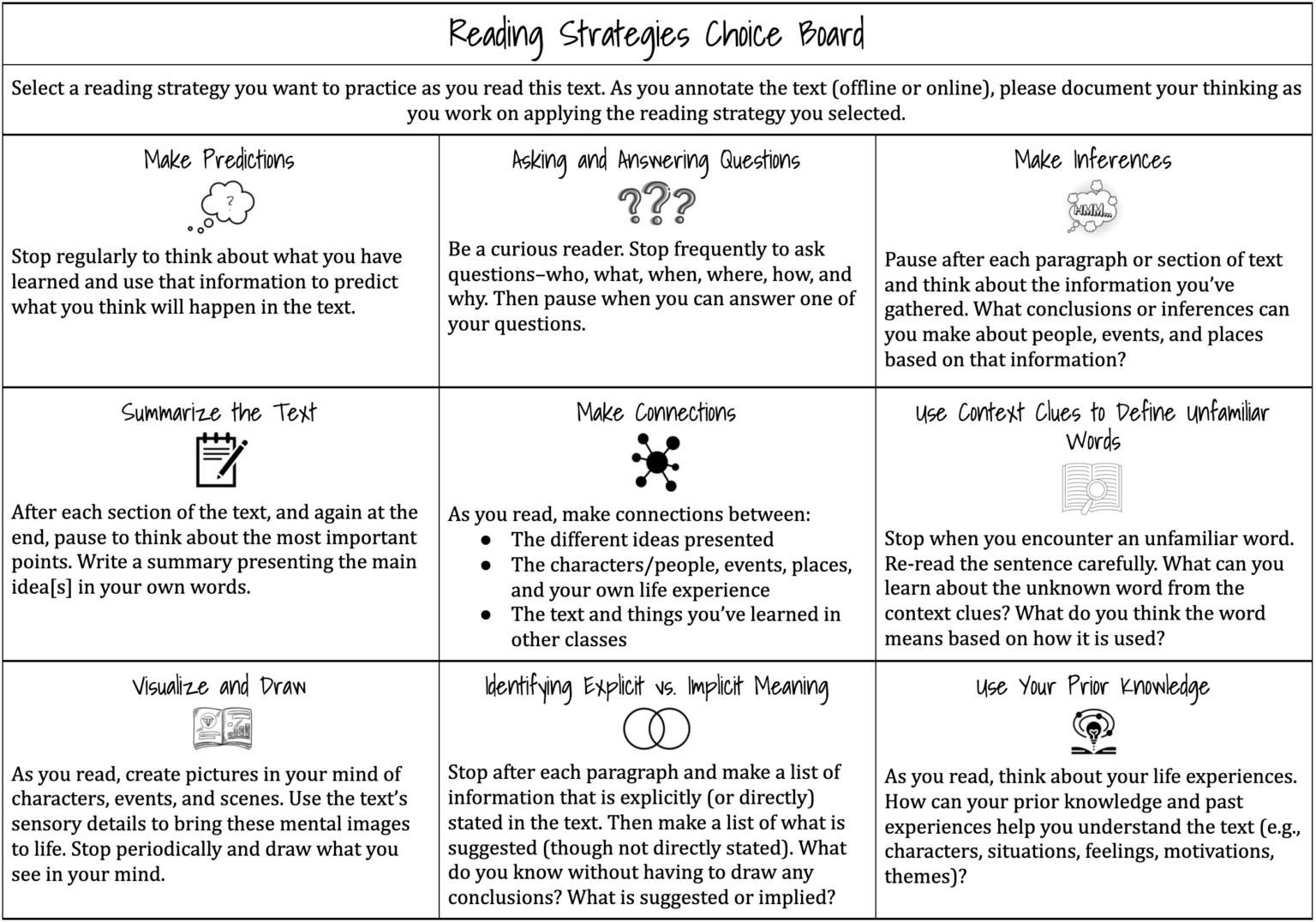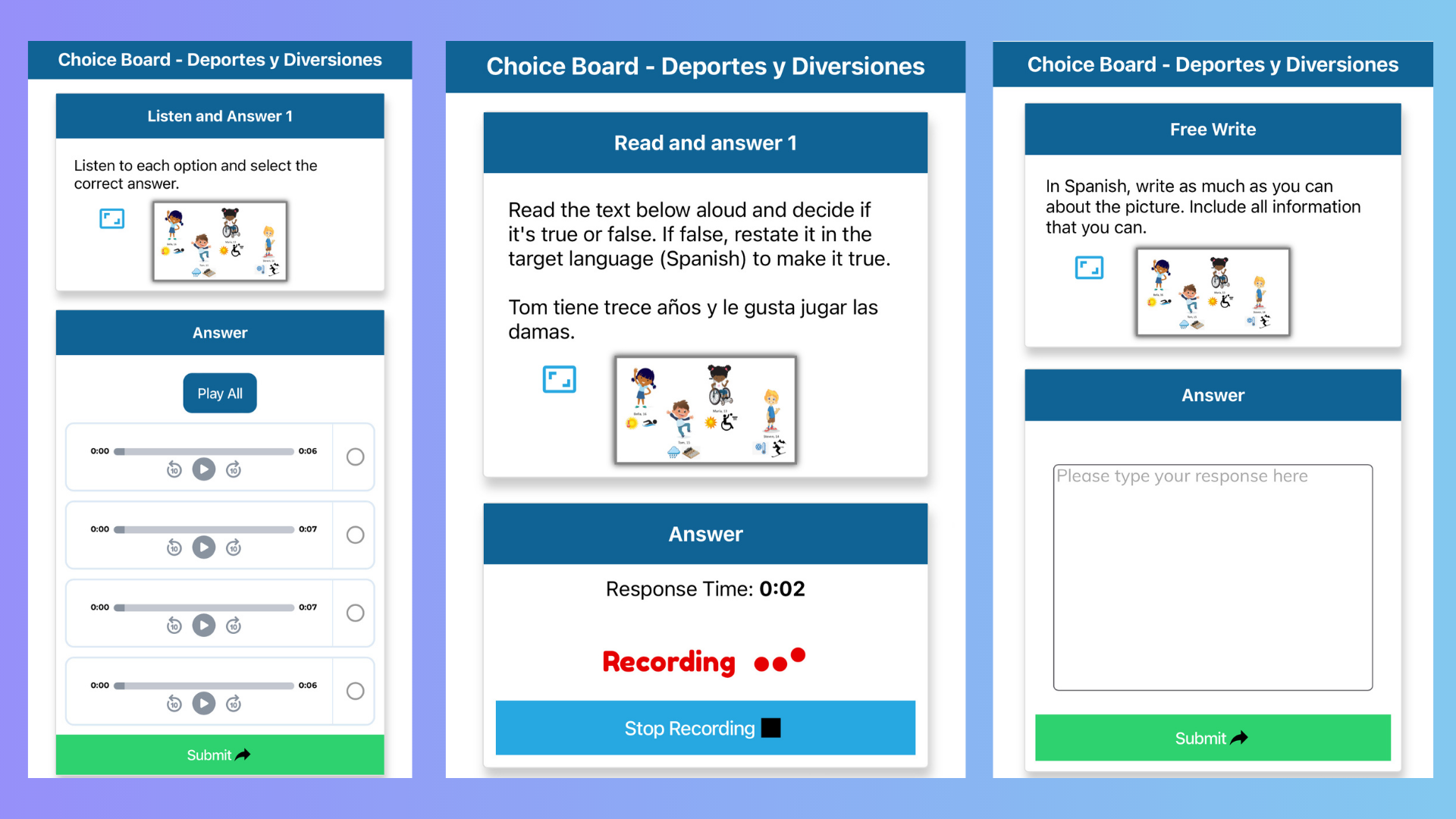This guest blog was written by Extempore Ambassador Kathryn Rump.
Life involves an endless amount of choices, from what we're going to eat for breakfast to whom we choose to marry. By allowing choice in the classroom, students have greater control of their learning and can better show their strengths and interests.
This student choice can range from where students choose to sit or how they opt to produce their work, such as on paper or digitally. Student choice facilitates creativity as well as higher-order thinking. In most instances, it also allows them to work at their own pace.
One way that I have cultivated student choice and increased engagement is by offering a “choice board.” The activities on the choice board provide them with meaningful tasks to demonstrate proficiency, and by offering choice, students can find what's most interesting to them, as opposed to feeling forced to do something less desirable.
Not only are students empowered to choose how they demonstrate their mastery of a topic, but the teacher is also given a variety of ways to check for understanding. Allen and Phillips (2022) advocate for choice boards:
“If you’ve ever had your eyes glaze over as you regarded the night’s looming stack of 120 freshmen essays to grade, this could be the refreshing twist you’re looking for."
Like any new strategy, though, implementing choice boards takes careful planning. How many choices should we give? How will students be assessed on the different tasks? Here are a few tips on designing choice boards for students.
What kind of choice board do you want?
Start by deciding what kind of choice board you want. Some options include strategy-specific choice boards, tic-tac-toe boards, and menu choice boards.
A strategy board will ask students to focus on various strategies as they read a text or practice vocabulary. Dr. Catlin Tucker provides a fantastic board of reading strategies that teachers can implement. View it below.

A tic-tac-toe board asks students to complete any three tasks in a row. By arranging the tasks carefully, you can ensure that students are completing a variety of activities.
Finally, my personal favorite is the menu choice board, where students are presented with categories and must pick activities from each one. Quadrino (2021) likens it to ordering at a restaurant – one appetizer, one entrée, and one dessert. With the menu choice board, the different categories can be used to assess / practice different modes of communication. I usually try to have interpretive, writing, and speaking options.
Focus on Communication
Once you select your choice board style, design activities to assess proficiency, emphasizing the function of the language over proper form. Fischer (2013) reminds us..
“By assessing proficiency first, you put the emphasis on real-world communication skills rather than vocabulary and language structures."
It’s also important to have clear guidelines and rubrics for the tasks. Using a simple, proficiency-centered rubric for choice boards, projects, and other tasks will help students have clear expectations for their end product. You want to ensure that the tasks that you select align with the end goal in mind, whether it's describing a students’ typical routine or talking about a trip during summer vacation.
Additionally, it may be necessary to teach the students how to complete the tasks for the choice board. Modeling these tasks in class can help eliminate confusion when students finally work on them independently. You should also take into consideration the rigor and necessary time for each task, too. By using a variety of communicative tasks, you provide students the opportunity to show what they can do with the language instead of just reproducing vocabulary and grammar that they have memorized.
Choice Boards and Extempore
Since choice boards are ideal for assessing more than one mode of communication, Extempore fits right in. There are two approaches you can take in designing a choice board with Extempore.
The first is a more traditional menu incorporating tasks and Extempore for presentational speaking or writing. The design is simple, with categories from which students can select a task. You can also break down the categories into anything that fits your needs and preferences. In this example, students are given choices based on the three modes of communication. The topic is talking about sports and leisure activities preferences. Click the image below to access the full slideshow.

The second option involves choosing an image and having students complete different tasks all within Extempore. I like to use Google Slides or Canva to create an array of images. From there, you can create questions for all modes of communication. Import this assessment to your Extempore account here, or via the button below.

Choice boards are just one way to facilitate student choice and encourage students to demonstrate understanding. As students are provided with a choice, they may also feel more engaged and motivated with the subject. Teachers who wish to introduce choice boards into class must first decide what communicative tasks they will use and design them carefully to make sure the end goal is the same. Through careful planning, choice boards can be a valuable addition to the classroom to boost both student and teacher interest in your classroom.

Sources:
https://calicospanish.com/assessing-student-choice-assignments-in-the-world-language-classroom/
https://www.edutopia.org/article/incorporating-choice-boards-world-language-classes
https://catlintucker.com/2021/08/choice-boards101/
https://www.edutopia.org/article/using-choice-boards-boost-student-engagement
https://www.teq.com/engaging-choice-boards/


